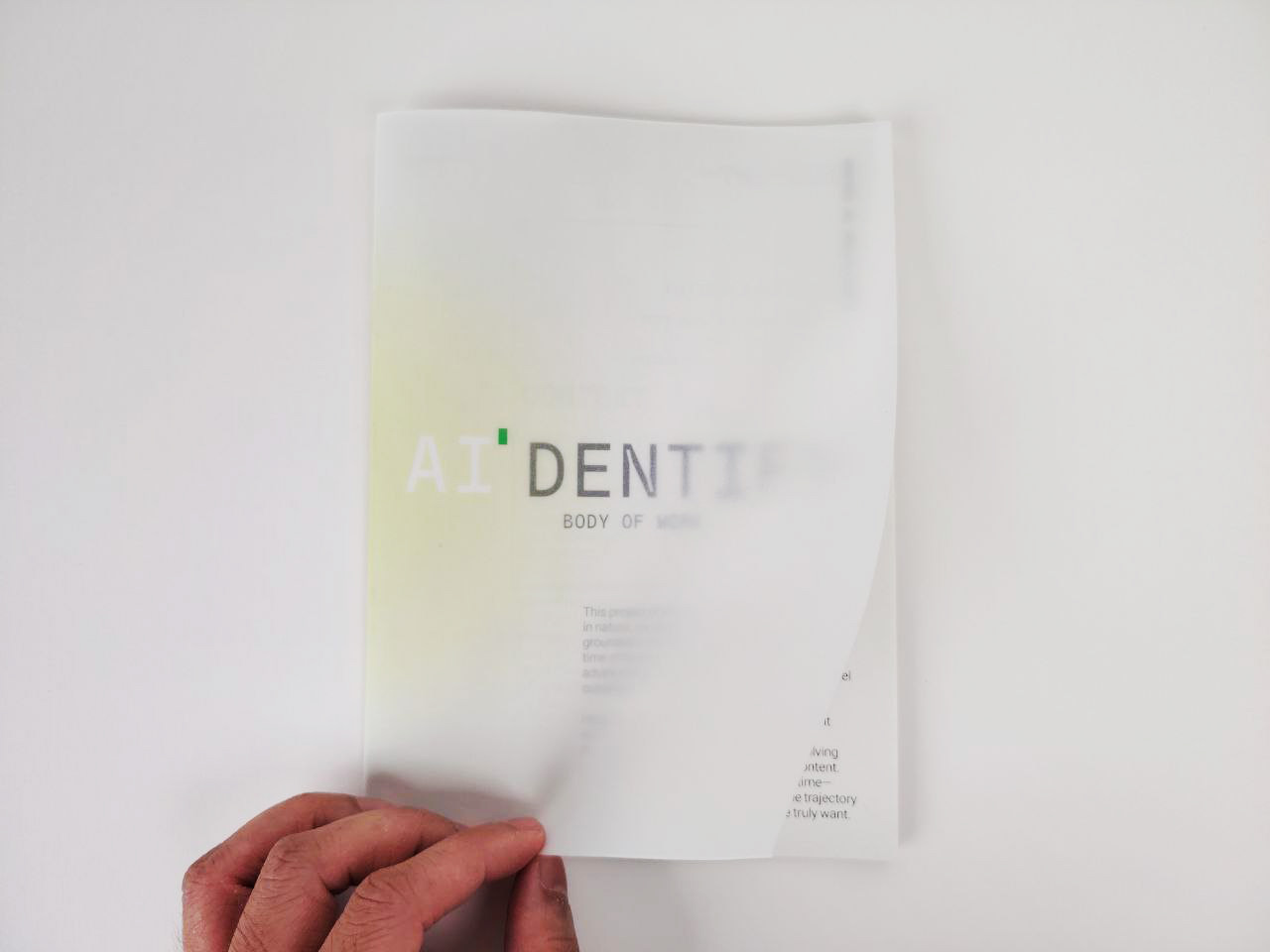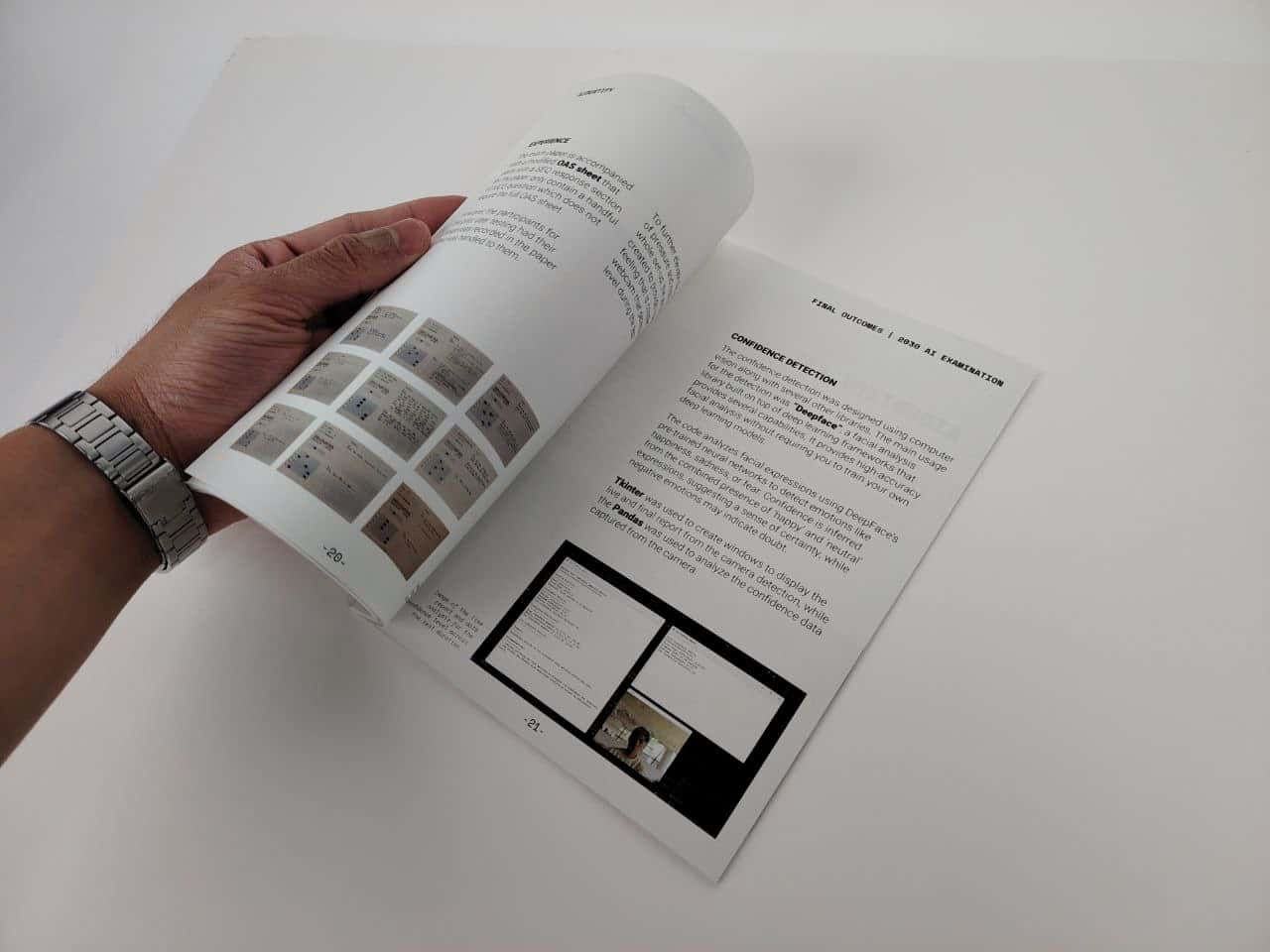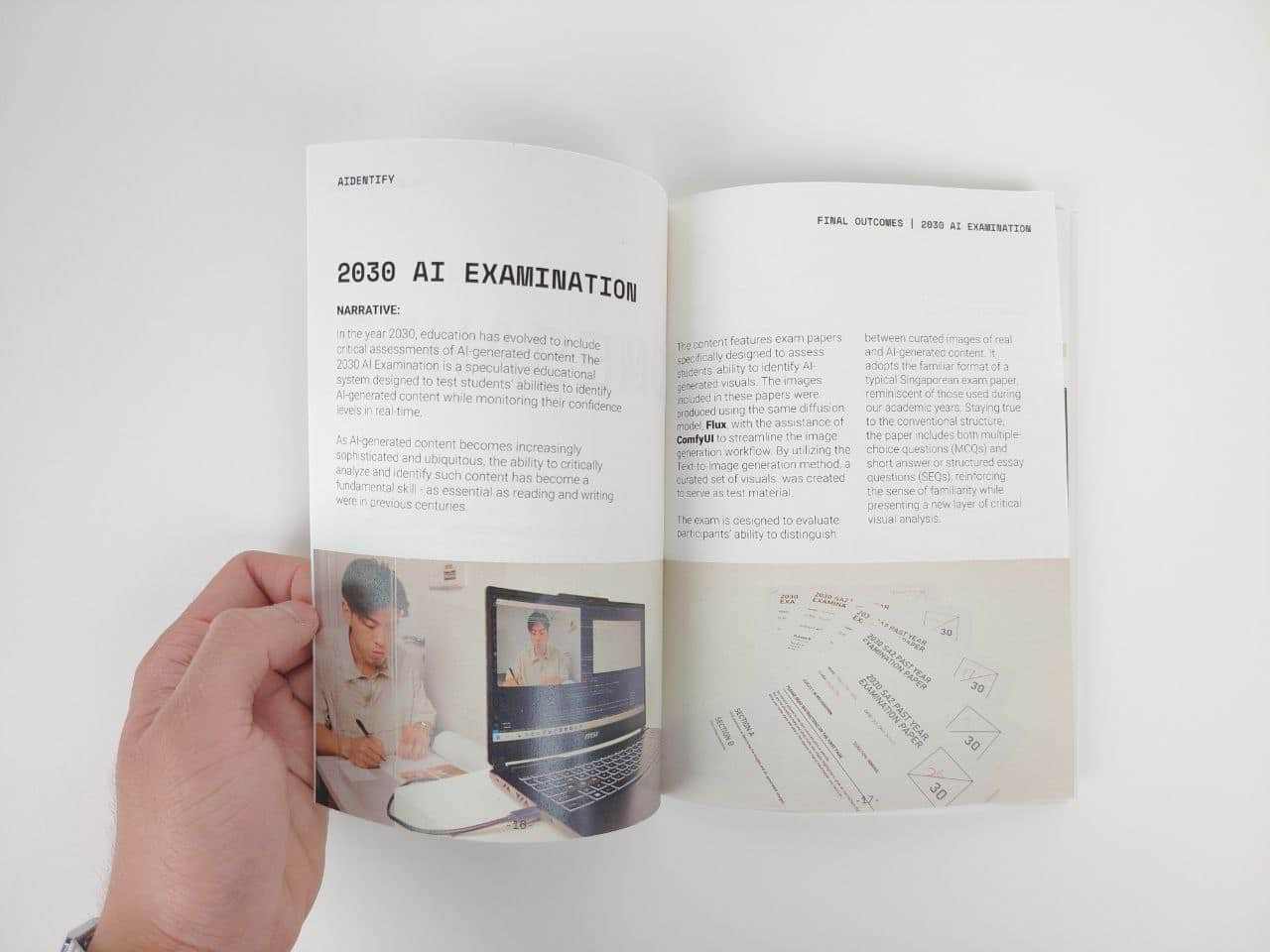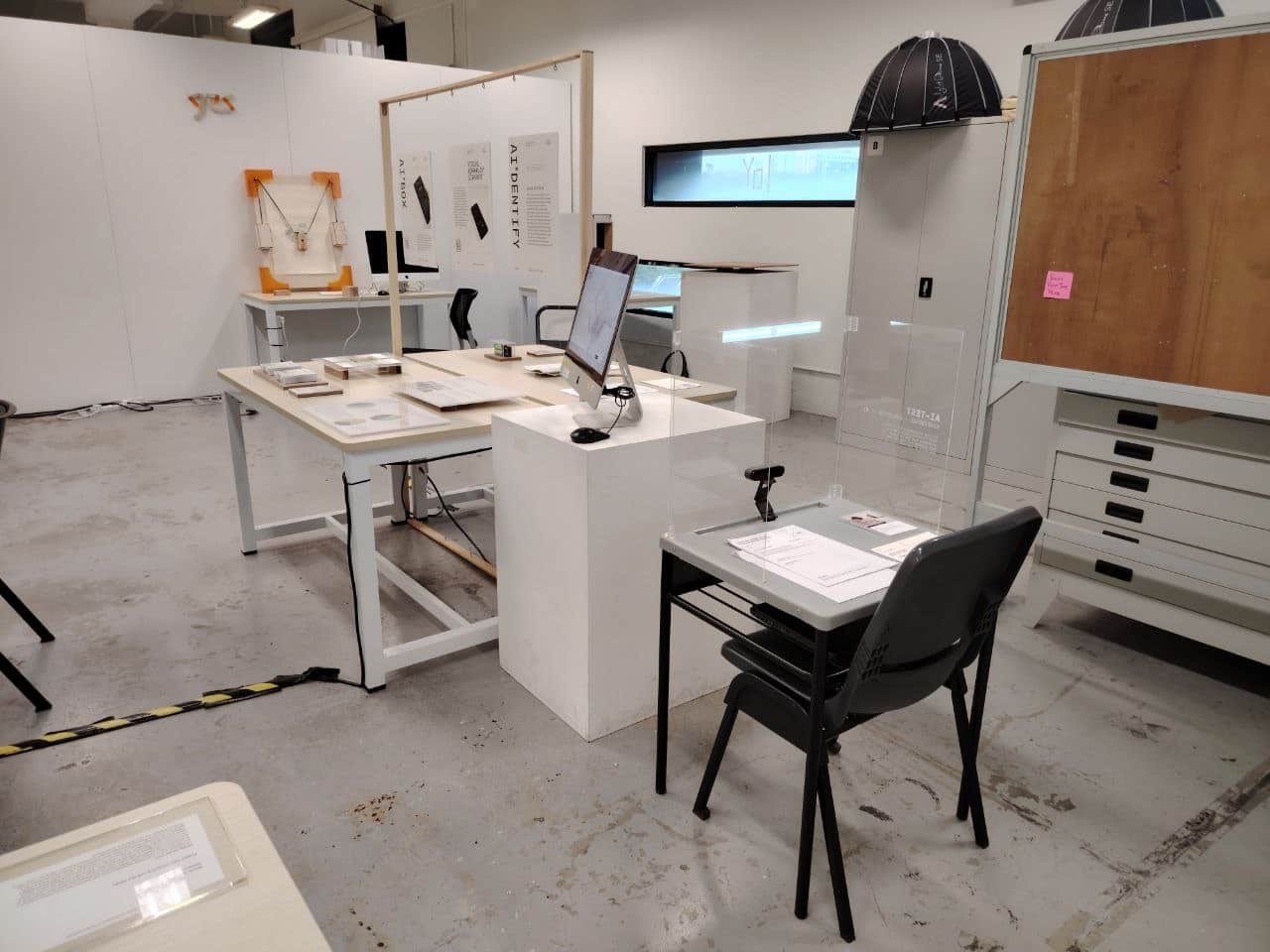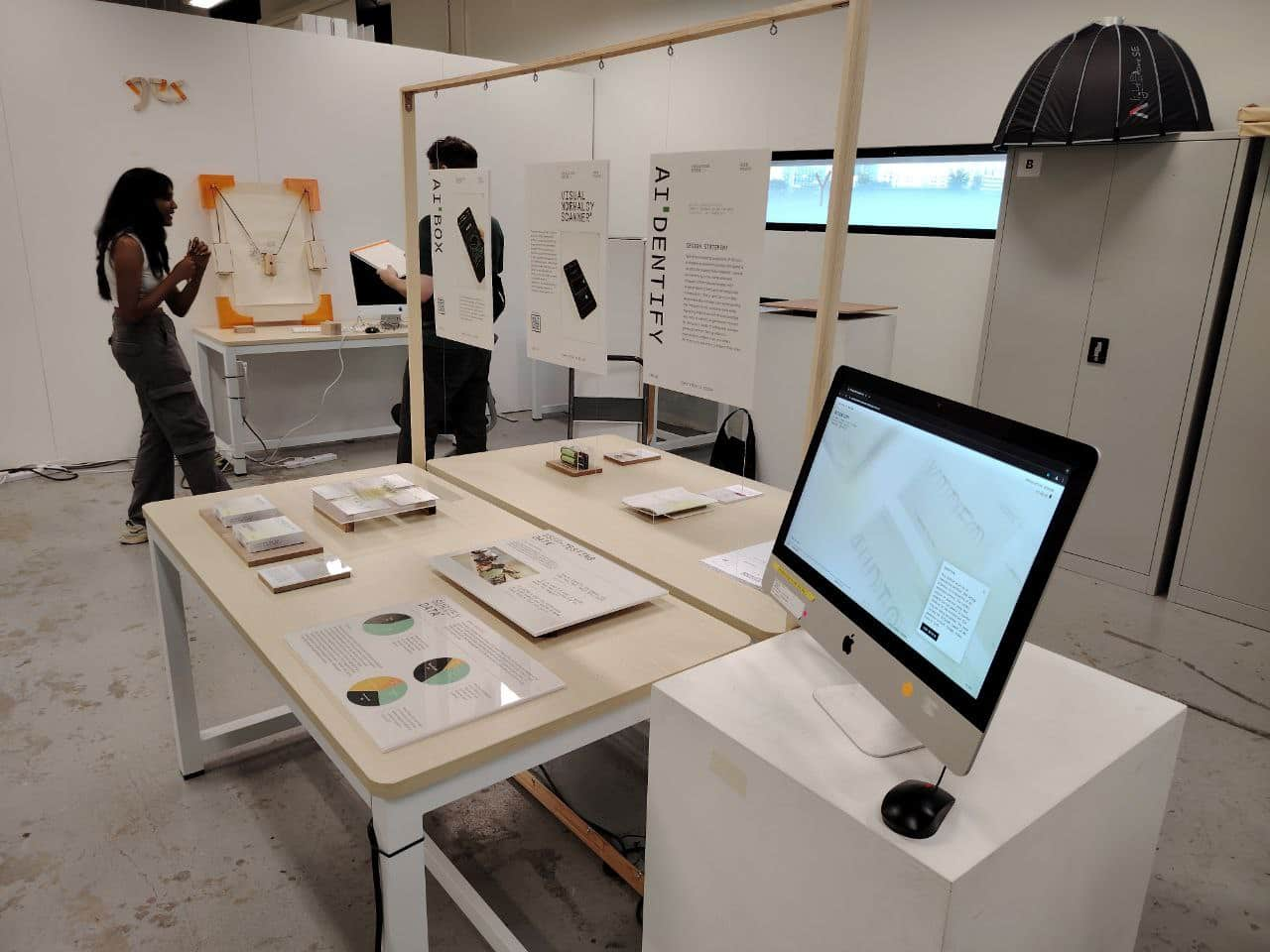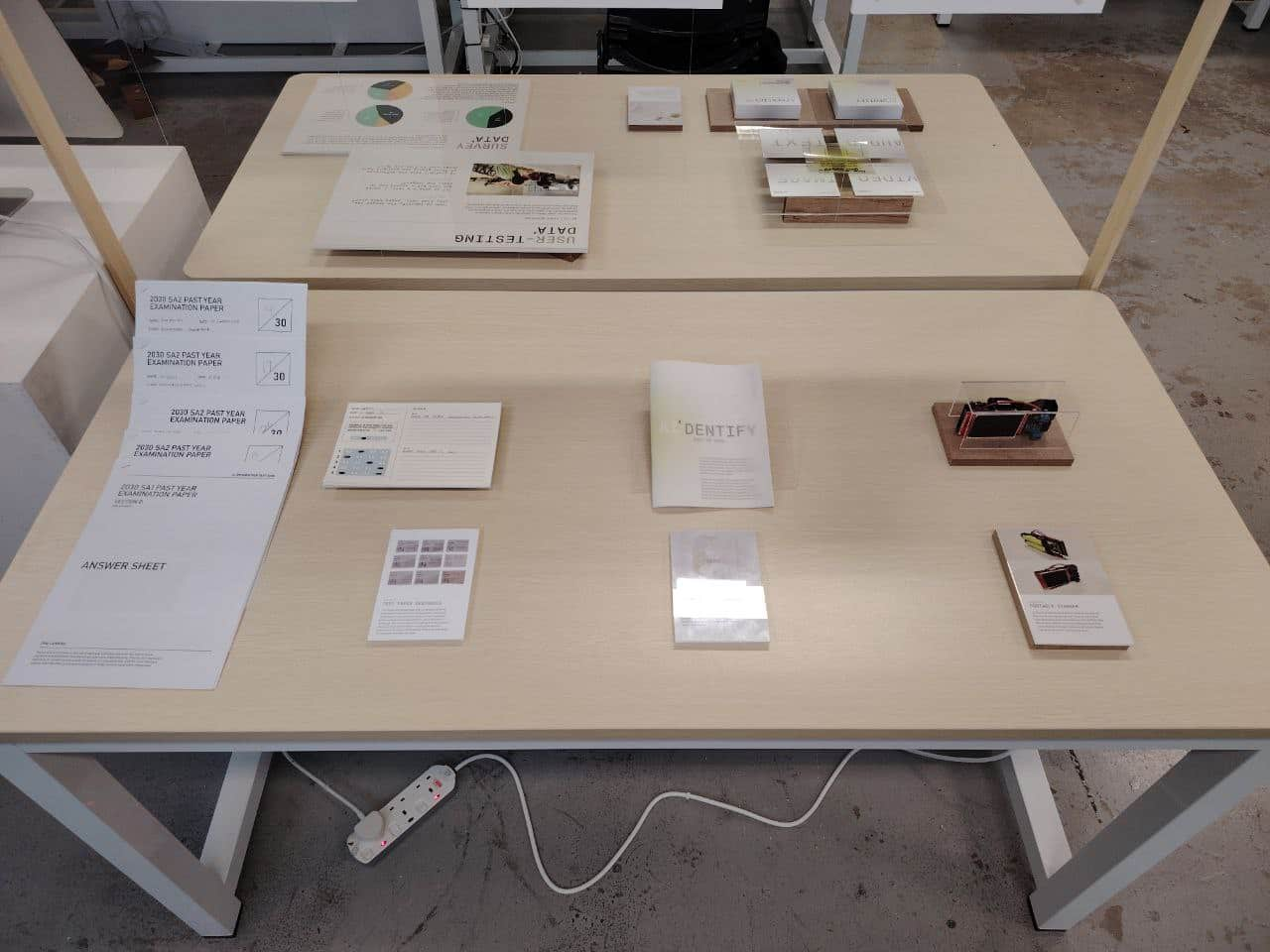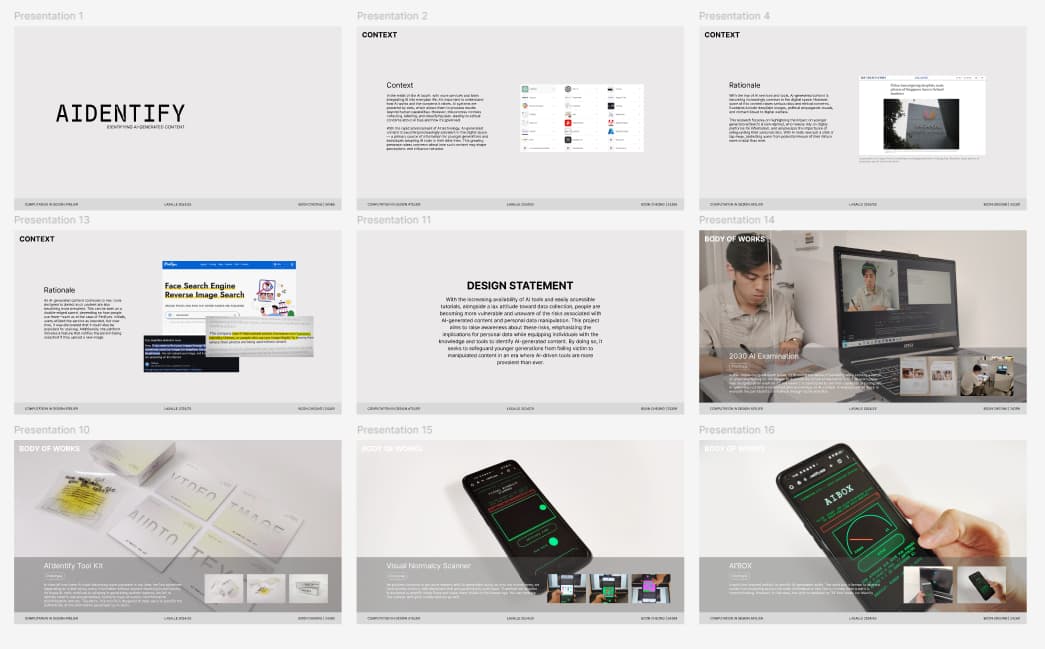SETTING UP
For the setup layout, I made several refinements, deciding to include additional materials that would better showcase the user testing evidence contributing to the development of the artifacts displayed on the table. Recognizing the importance of making the design process more transparent and traceable, I also printed and set up the publication documenting the body of work. This publication explains the technical choices behind each design decision, serving not just as supplementary information but as critical proof of the project's research depth. By doing so, the setup now not only presents the final outcomes but also invites viewers to engage critically with the iterative development process—reinforcing the speculative nature of the project and highlighting the informed choices that shaped it.
BODY OF WORK
For the body of work, I decided to produce a physical publication, as it could also be carried forward for the GradShow, especially given the lack of interactive digital displays planned for that event. Choosing a printed format ensures the research, processes, and technical explanations remain accessible and tangible to audiences. For the publication's design, I intentionally kept it simple and clean—prioritizing clarity and essential information over unnecessary visual complexity. This decision aligns with the overall visual language established across the other deliverables, maintaining consistency throughout the project presentation.
The publication will be A5 in size, striking a balance between portability and readability, allowing viewers to easily hold, flip through, and engage with the content. Critically, opting for a physical format strengthens the narrative of transparency and accessibility, encouraging deeper reflection on the making process behind the speculative artifacts.
For the choice of paper, I selected Reclaim paper (100gsm) for the main body and used tracing paper as the cover material. This decision was made both for practical reasons—such as the lightweight, eco-friendly quality of Reclaim paper—and for conceptual alignment with the project's theme. The translucent tracing paper cover was a deliberate design choice to represent the "blurred lines" between reality and AI-generated content, visually reinforcing the central question of authenticity that runs throughout the work. By embedding the theme directly into the materiality of the publication, the piece invites readers to engage with the ideas of transparency, distortion, and uncertainty right from their first interaction. Critically, this choice moves beyond aesthetics; it situates the publication itself as part of the speculative narrative, subtly challenging users to reflect on how surface impressions can often obscure deeper truths.
UPDATING TABLE SET-UP
After setting up the iMac, it was configured to continuously loop the videos via the Catalog of Making website, allowing visitors to view each artifact and understand how they function. The layout was intentionally designed to maximize the use of space while maintaining a minimalistic and clean aesthetic.
The setup was carefully curated to create a logical and engaging flow: starting with the introduction of the design statement, supported by data and evidence that grounds and justifies the project’s direction. This was followed by a gradual reveal of each artifact individually, allowing visitors to absorb and reflect on them one at a time.
Towards the back of the table, a section was dedicated to showcasing the failed attempts and the Body of Works publication, offering deeper technical insights for those interested in a more detailed understanding. Additionally, physical copies of the user testing papers were displayed, providing tangible proof of the engagement and responses gathered. This structure was intentionally designed to guide the audience through the thought process behind the project, reinforcing transparency and critical reflection at every stage.
Slide Deck Preparation
Similarly to the end of Semester 1, a final slide deck was prepared to accompany the presentation. Its purpose was to ensure the markers had a comprehensive and detailed understanding of the project, filling in any gaps that might not have been fully covered during the live presentation. The slide deck acted as both a supplementary document and a means to reinforce the project’s critical considerations, design evolution, technical decisions, and overall conceptual framing.

